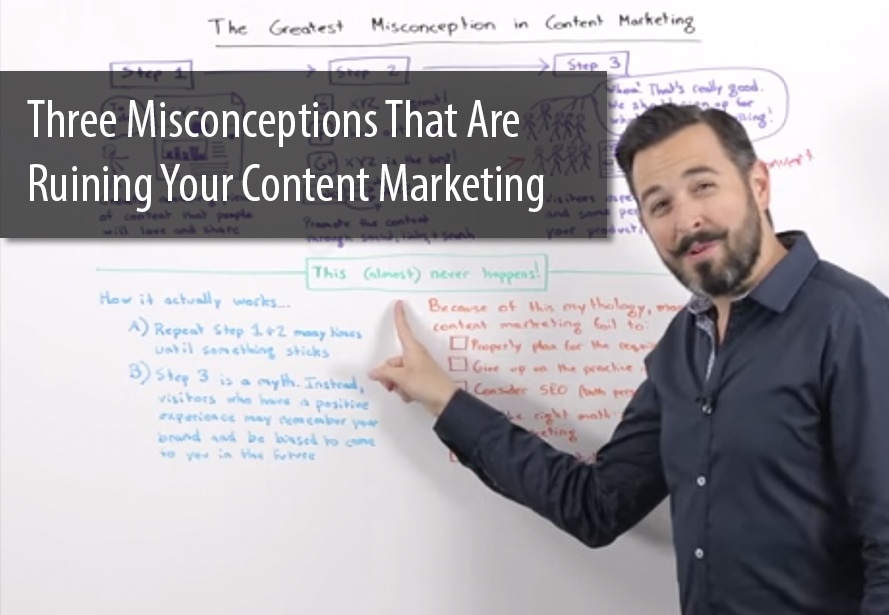
We've been working on a lot of new websites for clients lately -- writing new copy and developing inbound and content marketing strategies along the way.
And I've noticed a common trend for many B2B and B2C sites.
Generally speaking, they all have solid copy and excellent content.
But something's a bit off.
The copy is largely based on "We" or "Our" messaging.
- "We provide (a service)."
- "Our product does (XYZ)."
- "We know the most about (our industry)."
While this messaging paints a clear picture about your company, it tends to stop visitors in their tracks because it doesn't address their needs. The subtext of the messaging is, "Hey, look how great we are!"
Using "We" messaging forces visitors to ask:
What's your content got to do with me?
And that may be enough for them to bounce off your site, hit the next link on Google, and reach your competition.
How do you keep visitors around?
Shift the messaging from "We" and "Our" to "You" and "Your" -- especially on your homepage and other dedicated landing pages.
I'm not saying your website should be void of information about your company and the products or services that you provide, I'm simply saying you should speak to your prospects' pain points -- the problems or challenges or opportunities they are trying to solve -- where they are most likely to land on your site.
How to craft "You" messaging
- Start with revisiting your buyer personas. If you don't have any, take the time to create at least one profile of your ideal customer. Here's how.
- Identify the pain points your main persona is trying to solve that relate to your products or services.
- Think about the questions or topics they would be searching for on Google.
- Speak to those pain points in your copy.
Example of "We" messaging vs. "You" messaging:
Let's consider a dental practice that specializes in sedation dentistry for people with dental anxiety. Say that three times fast ;)
"We" messaging might sound like this:
- We have the latest technology in sedation dentistry.
- Our process makes visiting the dentist easier.
- We have the most experience in sedation dentistry in the area.
Is the messaging immediately relevant for visitors who fear dental procedures and routine maintenance?
"You" messaging for the same practice might sound like this:
- Have you avoided the dentist due to anxiety or fear?
- You can visit the dentist, and smile about it.
- Get your complex dental procedures done in one visit.
What's Your Point?
The point of "You" messaging in this example is to immediately address the persona's needs or concerns, especially if they haven't even heard of sedation dentistry to begin with.
Once they identify with a pain point, you can direct them to more information about the specifics of sedation dentistry on a subsequent page.
The trick is to avoid making visitors to your site answer the title of this post on their own. Spark their curiosity for learning more about what you provide by triggering a pain point.
Need to take a step back and rehash your buyer personas?
Check out this free template!
Share this
You May Also Like
These Related Stories
Marcus Sheridan on What Quantifies a Successful Business Website [VIDEO]

What Do the Best Manufacturing Websites Have in Common?


/Accreditations/CRM-Implementation-Accredited-Badges.png?width=170&height=138&name=CRM-Implementation-Accredited-Badges.png)
/Accreditations/Onboarding-Accredited-Badges.png?width=170&height=137&name=Onboarding-Accredited-Badges.png)
/Accreditations/Custom-Integration-Accredited-Badges.png?width=170&height=137&name=Custom-Integration-Accredited-Badges.png)

